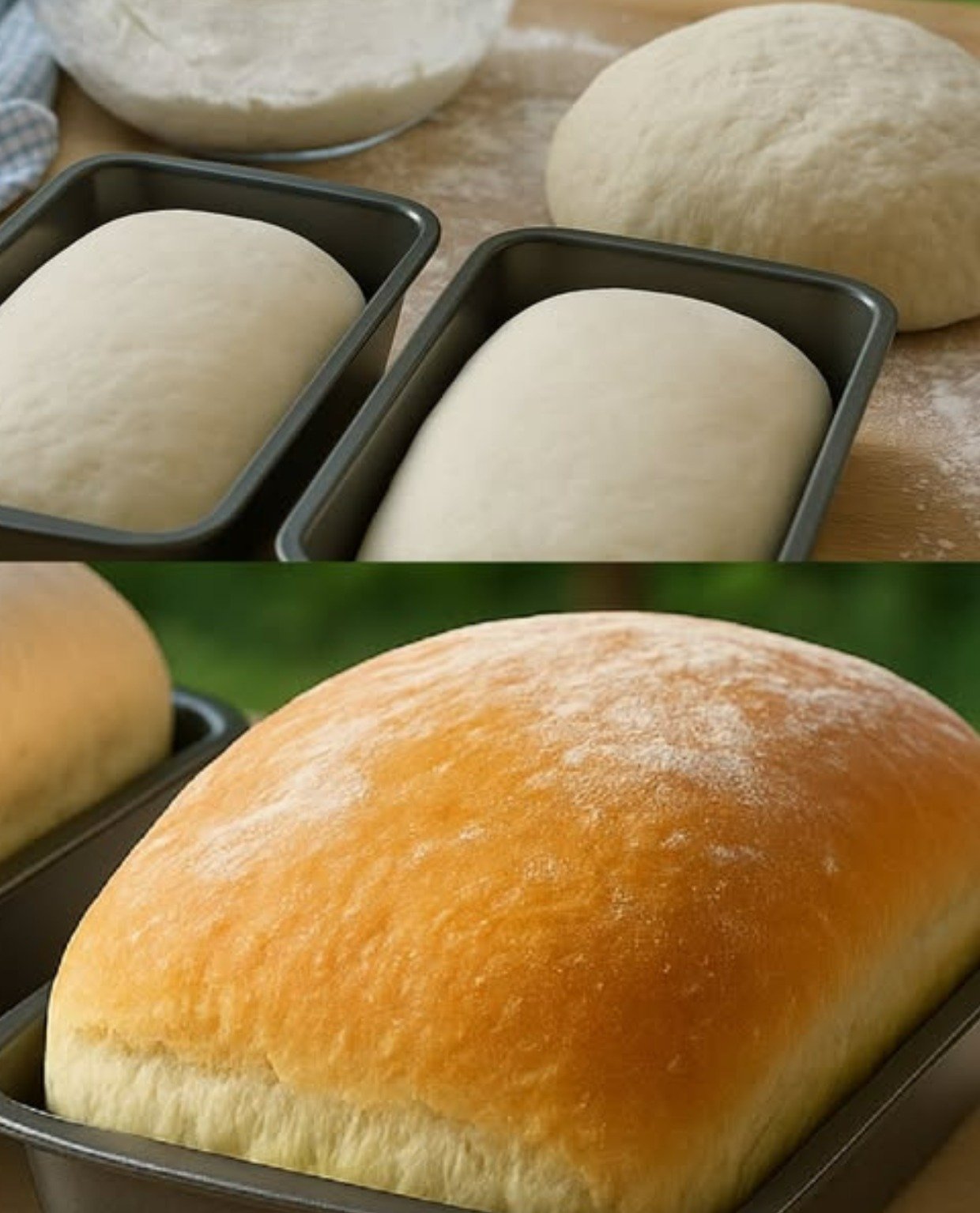Few things in the world are as comforting as the smell of freshly baked bread wafting through the kitchen. White bread, in particular, holds a special place in many households. Its soft, pillowy texture and mild flavor make it versatile—perfect for sandwiches, toast, or simply slathered with butter. Baking white bread at home may seem intimidating, but with a handful of pantry staples and some patience, you can create a loaf that rivals anything from the bakery. This recipe will guide you step by step, ensuring that even beginners can enjoy the joy of homemade bread.
Ingredients
-
4 ½ cups all-purpose flour (plus extra for kneading)
-
2 ¼ teaspoons active dry yeast (1 packet)
-
1 ½ cups warm water (110–115°F / 43–46°C)
-
2 tablespoons granulated sugar
-
2 tablespoons unsalted butter, softened
-
2 teaspoons salt
-
2 tablespoons milk (for brushing the top, optional)
Step-by-Step Instructions
1. Activate the Yeast
In a large mixing bowl, combine warm water and sugar, then sprinkle the yeast over the top. Let it sit for 5–10 minutes until it becomes foamy. This step is crucial: it ensures the yeast is alive and ready to work. If the mixture does not foam, the yeast may be expired or the water temperature may have been off—start over with fresh yeast.
2. Mix the Dough
Once the yeast is active, add softened butter and salt. Gradually stir in the flour, about one cup at a time, until a sticky dough begins to form. You can do this by hand with a sturdy spoon or with the dough hook attachment on a stand mixer. The dough should pull away from the sides of the bowl but still be slightly tacky to the touch.
3. Knead the Dough
Turn the dough onto a lightly floured surface and knead for 8–10 minutes by hand, or about 6 minutes in a stand mixer. Proper kneading develops the gluten, giving the bread its chewy structure and airy crumb. The dough should become smooth, elastic, and spring back when poked gently with your finger.
4. First Rise
Place the dough in a lightly greased bowl, turning it once to coat the surface. Cover with a damp towel or plastic wrap and let it rise in a warm, draft-free area for about 1–1 ½ hours, or until it has doubled in size. Rising time may vary depending on room temperature.
5. Shape the Loaf
Once the dough has risen, punch it down gently to release the air. Transfer it to a lightly floured surface and shape into a rectangle. Roll the dough tightly into a log, tucking in the ends. Place it seam-side down into a greased 9×5-inch loaf pan.
6. Second Rise
Cover the pan loosely with a towel and let the dough rise again for 30–45 minutes, or until it has doubled in size and crests slightly above the pan. Avoid over-proofing, as this can cause the loaf to collapse while baking.
7. Bake the Bread
Preheat the oven to 375°F (190°C). If desired, brush the top of the dough with milk for a golden crust. Bake for 30–35 minutes, until the loaf is golden brown and sounds hollow when tapped on the bottom. An instant-read thermometer inserted into the center should register around 190°F (88°C).
8. Cool and Slice
Remove the bread from the pan and allow it to cool on a wire rack for at least 30 minutes before slicing. Cutting into hot bread can cause it to become gummy inside, so patience is key.
Tips for Success
-
Water Temperature Matters – Yeast thrives in warm water but dies in overly hot water. Aim for 110–115°F.
-
Don’t Rush the Rise – Good bread takes time. Allow the dough to fully double in size before moving to the next step.
-
Experiment with Flour – While all-purpose flour works, bread flour gives slightly chewier results with more structure.
-
Storage – Keep your loaf in an airtight container or wrapped in foil at room temperature for up to 3 days. For longer storage, freeze slices in a freezer-safe bag.
Serving Ideas
Homemade white bread is endlessly versatile. Enjoy a warm slice with butter and jam for breakfast, or use it to craft the ultimate grilled cheese sandwich. It makes excellent French toast when slightly stale, and thick slices are ideal for hearty sandwiches. Even simple toast with a drizzle of honey or cinnamon sugar becomes a treat when the bread is made fresh at home.
Why Bake White Bread at Home?
Baking bread is more than just a way to make food—it’s an experience. The process of kneading, waiting for the dough to rise, and watching it transform in the oven is deeply satisfying. Store-bought loaves often contain preservatives, stabilizers, and added sugars. When you bake at home, you control the ingredients and can enjoy a wholesome loaf with no unnecessary additives. Plus, the flavor and aroma of fresh bread simply cannot be matched.
